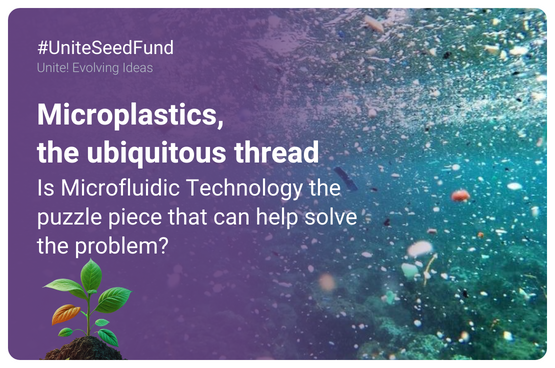
Three Unite! laboratories work to reduce the presence of microplastics in aquatic environments
Jasmina Casals, UPC researcher, leads the project in which the MicroTech Lab (UPC), the EPM Lab at SIMaP (University of Grenoble-Alpes), and the ChiLab, Laboratory of Materials and Microsystems (POLITO) are involved. The project have received funding from the Unite! Seed Fund to introduce microfluidics in environmental protection
Professor and researcher at the MicroTech Lab of the Universitat Politècnica de Catalunya, Jasmina Casals, leads a project in collaboration with the EPM Lab at SIMaP (University of Grenoble-Alpes) and the ChiLab, Laboratory of Materials and Microsystems (POLITO), aimed at improving current wastewater treatment techniques by combining microplastics and nanoplastics separation methods with spectroscopic tools. The project is one of those selected by the Unite! Seed Fund, the seed fund of the alliance. The project team consists of researchers from these research centers such as Matteo Cocuzza and Simone Marasso (POLITO), Laurent Davoust (Grenoble Institute of Technology), UPC PhD student Amir Mohamdimer, and two master's students from Polito and Grenoble.
In the initial phase of the project, the current state of the technique will be analysed by seeking studies in all participating countries on the types of microplastics and the challenges they pose. Likewise, different funding opportunities for this topic will be identified and summarized. The objective is to raise awareness among the alliance's universities, the industrial sector, and the public about microplastics discharged into waters through workshops and communication. The proposal will end with a defined work plan to be able to request joint doctoral proposals and new specific funding schemes for research in this area.
"Our goal is to advance in the development of detection technologies and microfluidic systems to improve environmental surveillance and allow efficient detection and elimination of microplastics and algal contaminants in water sources."
Currently, the presence of microplastics (MP) in aquatic environments is a global concern that threatens the lives of hundreds of species and is considered one of the major health concerns of recent decades. To address this issue, various technologies such as microfluidics and nanotechnology can be useful for removing microplastics from aquatic environments. Microfluidics could be particularly useful in this area given the similarities in density and size between microplastics and cells, extensively studied in microfluidics.
Drinking water is suspected to be a potential source of microplastics for humans. In addition, there is limited research related to the removal of microplastics in wastewater treatment plants (WWTPs). Most of these treatment plants and procedures are designed for the removal of large quantities of contaminants, such as organic matter or large solids. Microplastics consist of particles ranging in size from 1 to 5 μm. For this reason, more advanced methods are needed for the removal of these contaminants.
According to the researchers participating in the project, the research results from Unite! could be transferred to Spanish companies, which are showing concern about the levels of microplastics in the waters they analyse. In Italy, a recent study has revealed that the rate of plastic components in the water of many lakes is very high, and in France, recent studies have also been conducted in natural waters where the presence of significant amounts of microplastics has been detected in rivers, especially in the Marne, Seine, and Oise rivers.

